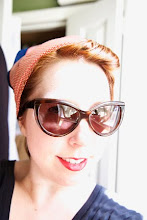On view now through May 9th at the Met is a small, but fascinating show of Victorian era photocollage called "Playing with Pictures."
Made in England during the 1860s-1870s, this collection of album pages and watercolor paintings explores mixed media in surreal collages. The work was produced almost exclusively by women of the aristocracy using cut-up carte de visite images of family and friends. Their playful, subversive melding of painting, drawing, and photography into surrealist scenes predates the avant-garde art scene by decades (Siegel 13).
This work has been rarely exhibited or appreciated, having suffered from "the double indignity of being the product of both industrial photography and feminine craft" ( Siegel 14). Only recently has Victorian photocollage received attention by art historians interested in vernacular photography and feminist scholars seeking to recognize female artists "peripheral to art history" (Siegel 14).
These images contain elements that have become central issues in the evolution of photography: the cut-out figures from various sittings are a break from the one-point perspective of Renaissance paintings (Siegel 32); in placing these figures into imaginary scenes, the tableau vivant approach to photography is referenced (Weiss 37); not to mention the very act of cutting and pasting as a precursor to Photoshop. I love how these photocollages of the Victorian era are dealing with all these issues that went on to become part of the modernist movement, yet their makers' intentions were much more to do with wit and whimsy. "In Victorian albums, photographs were manipulated not for artistic purpose, but for the pleasurable and empowering strategy of refusing to deal with meaning seriously, in favor of the delights of play" (Di Bello 60).
Works Cited:
Di Bello, Patrizia. "Photocollage, Fun, and Flirtations." Playing with Pictures: The Art of Victorian Photocollage." Chicago: Art Institute of Chicago, 2009.
Siegel, Elizabeth. "Society Cutups." Playing with Pictures: The Art of Victorian Photocollage." Chicago: Art Institute of Chicago, 2009.
Weiss, Marta. "The Page as Stage." Playing with Pictures: The Art of Victorian Photocollage." Chicago: Art Institute of Chicago, 2009.





















